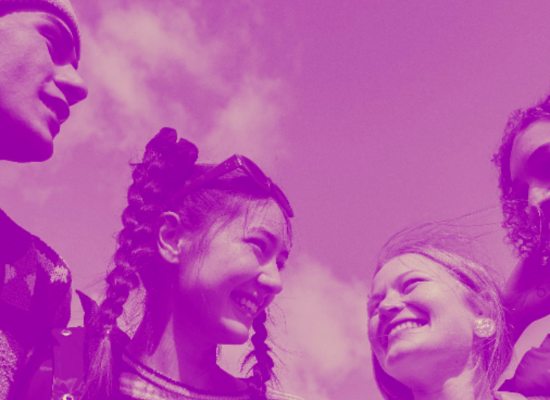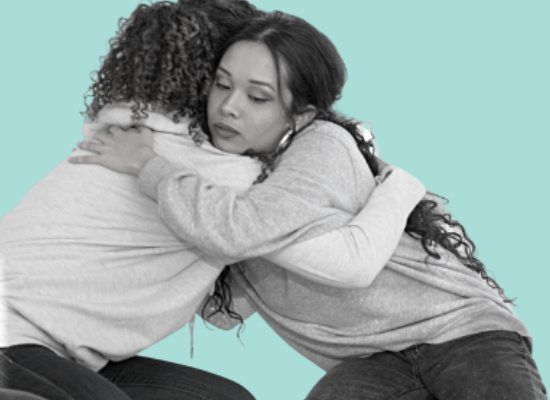
Stephanie Hepburn is a writer in New Orleans. She is the editor in chief of #CrisisTalk. You can reach her at .
Growing up on the Hopi Reservation within the boundaries of Arizona, Kristine FireThunder said there was a single TV station and one radio station. Some kids lived in the same trailer park; otherwise, she’d have to walk a mile to the nearest village to find playmates. Isolation, she says, is a challenge to connectedness on rural reservations. FireThunder, executive director at the American Indian Chamber of Commerce of Arizona and former executive director of the Arizona Governor’s Office on Tribal Relations, says that while many people have phones, they may run out of minutes and not have the means to contact one another. Geographic separation alongside historical trauma from forced cultural assimilation and relocation as well as ongoing social, political, and economic injustices and disparities all contribute to the mental health of American Indians. “We carry historical trauma from one generation to the next and are not used to expressing our feelings or whatever problems we are experiencing, so we internalize them. This contributes to the high number of American Indians who experience anxiety and depression.” Additionally, American Indians may not talk about their distress in a way that clinicians recognize. For example, they might not use terms like depressed, anxious, and suicide but talk about Heartbreak Syndrome, the experience of sudden chest pain after the death of a loved one, or Ghost Sickness, characterized by a preoccupation with death.
Mental health crisis is on the rise in the United States, and it disproportionately affects people who are non-Hispanic American Indian or Alaska Native (AIAN) with suicide rates having increased by 139% between 1999 and 2017 among females and 71% among males. Native youth ages 15-24 and adults ages 25-44 are particularly vulnerable. FireThunder says lack of connectedness, community, and access to mental health services are critical factors. Additionally, finding ways to talk about suicide prevention and mental health crisis with tribes can be challenging. “The depth of discussion on and resources for mental health crisis depends on the tribe, but many don’t use the word suicide or even discuss death. It’s taboo.” She says each tribe has its way of processing a suicide. When communicating with tribes and their community members, FireThunder and her team defer to local community members to identify the strategy that celebrates the mind and body while focusing on suicide prevention strategies and training. “For some cultures, it’s a private situation that may just be limited to immediate family. If we’re speaking with youth, we may talk about friends who’ve struggled in the past.” There is no single approach as each tribe is unique with varying needs.
Access to mental health for American Indians varies. Metropolitan tribes have higher revenue from gaming and have built out their community emergency medical and behavioral health services. Also, they are geographically closer to city hospitals. FireThunder says it’s far more challenging for people living on rural reservations to get the same care. She says people in need of regular outpatient care, but who don’t have clinic services within their community, must travel long distances. “On the Hopi Reservation, people go to the Hopi Health Care Center. If they need specialized care, then they’re going to have to make a trip to Flagstaff. What if they don’t have a car, how are they going to get there? Help isn’t easily accessible.”
FireThunder thinks a way to facilitate change is through native youth, fostering their leadership skills, awareness of mental health, and building resilience within the community. Mental health supports through schools would be an ideal entry point, but she says that the tribal education system is complicated and often creates a school-to-prison pipeline, developing yet another layer of injury for children already carrying the burden of trauma. FireThunder says native youth are repeatedly punished for at-risk behaviors instead of addressing why they are doing them. “Perhaps they’ve been exposed to it at a young age and needed intervention, but no one cared enough to notice, or maybe the adults in their lives didn’t realize it wasn’t right to expose them to these adverse behaviors.”
That’s why FireThunder has focused on developing a different sort of classroom: youth leadership programs where guest speakers who’ve grown up on a reservation share their stories, expressing how they overcame challenges faced by today’s youth. She says what’s essential is that children and teens hear from people who experienced the same history and forms of trauma and went on to have fulfilling lives. “We want them to know that you can change your future regardless of the current circumstances.” The objective, says FireThunder, is twofold: get youth talking about suicide prevention and support a new generation of tribal leaders who know how to identify trauma and work to create an environment that promotes resilience. “Ten years ago, suicide wasn’t on tribes’ radar, but people are now increasingly aware of the numbers and the unfortunate circumstances that are contributing to our children’s risk.” Native youth have shared with FireThunder and her team their concerns on bullying, suicide, and asked how they can become better role models and leaders. In response, FireThunder and her team created Native Youth Know (NYK), an annual workshop that takes place on Indian Nations and Tribes Legislative Day, the first Wednesday of each legislative session. On the 24th Legislative Day in January, they focused on indigenous food systems to promote healthier lifestyles. She says the workshop provides youth a safe place to discuss challenges they face and is also a way to reintroduce them to their history and the benefits of cultivating the land. “Working outside is healing. Over the years, recipients have received Native Youth Know grants to develop parks and recreation areas for people to enjoy, start bands, develop sustainable gardens, address historical trauma and cultural loss, learn about their ancestral diet, and develop community gardens. Each of these projects has continued to grow.”
FireThunder and her colleagues also implemented workshops and traveled to tribal communities throughout Arizona because she says, “making them come to us would just be another layer of red tape.” The classes focus on indigenous food sovereignty and cultural preservation. While these are recreational programs, she says they are simultaneously emotional strength building opportunities. “We talk about how changes in United States policy impacted indigenous people and how those policies shaped the current state of Indian Country. By design, public schools do not offer curriculum for American Indian history beyond the story of Christopher Columbus or Thanksgiving.”
The NYK courses teach native youth about civic engagement and foster connection to their community through indigenous food systems, which FireThunder says help them build personal and interdependent resiliency. It also offers kids a reason to step away from their phone screens and social media, which she says is particularly toxic for native youth because they often don’t have resilience to bullying. “There’s nothing for them to fall back on if they feel negative about social interactions in the weird remote space of social media. That’s why building social support and connection is incredibly important. These projects are seeds that grow into sustainable gardens, storytelling, potlucks, and engagement. Our youth get to step back and look at what they’ve done and how much more they can accomplish.”
Photo credit: Wolfgang Staudt
This article was originally published on October 1, 2019.









